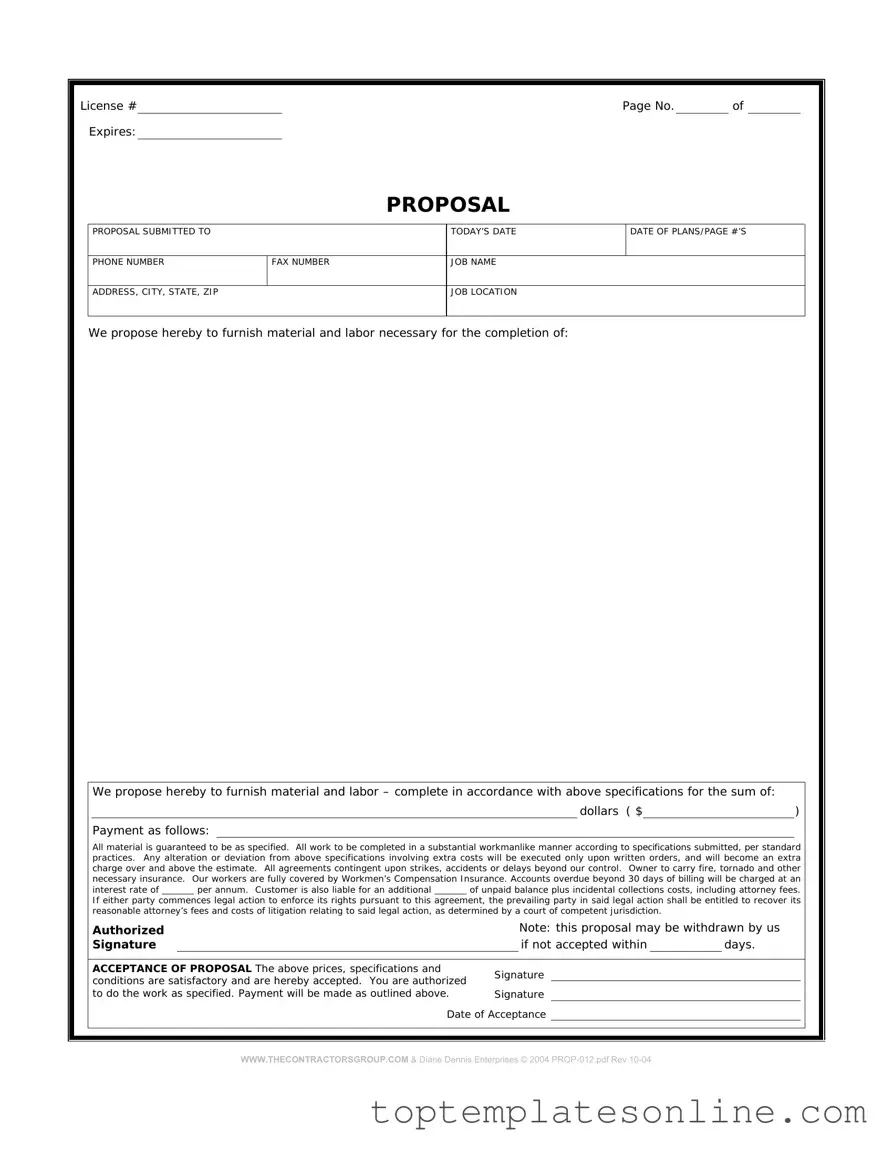Fillable Construction proposal form Form
The Construction Proposal Form is a document used by contractors to outline the details of a construction project and the associated costs. This form serves as a formal offer to perform work and includes essential information such as project scope, timelines, and pricing. Properly completing this form can help ensure clear communication between contractors and clients.
Customize Construction proposal form Here
